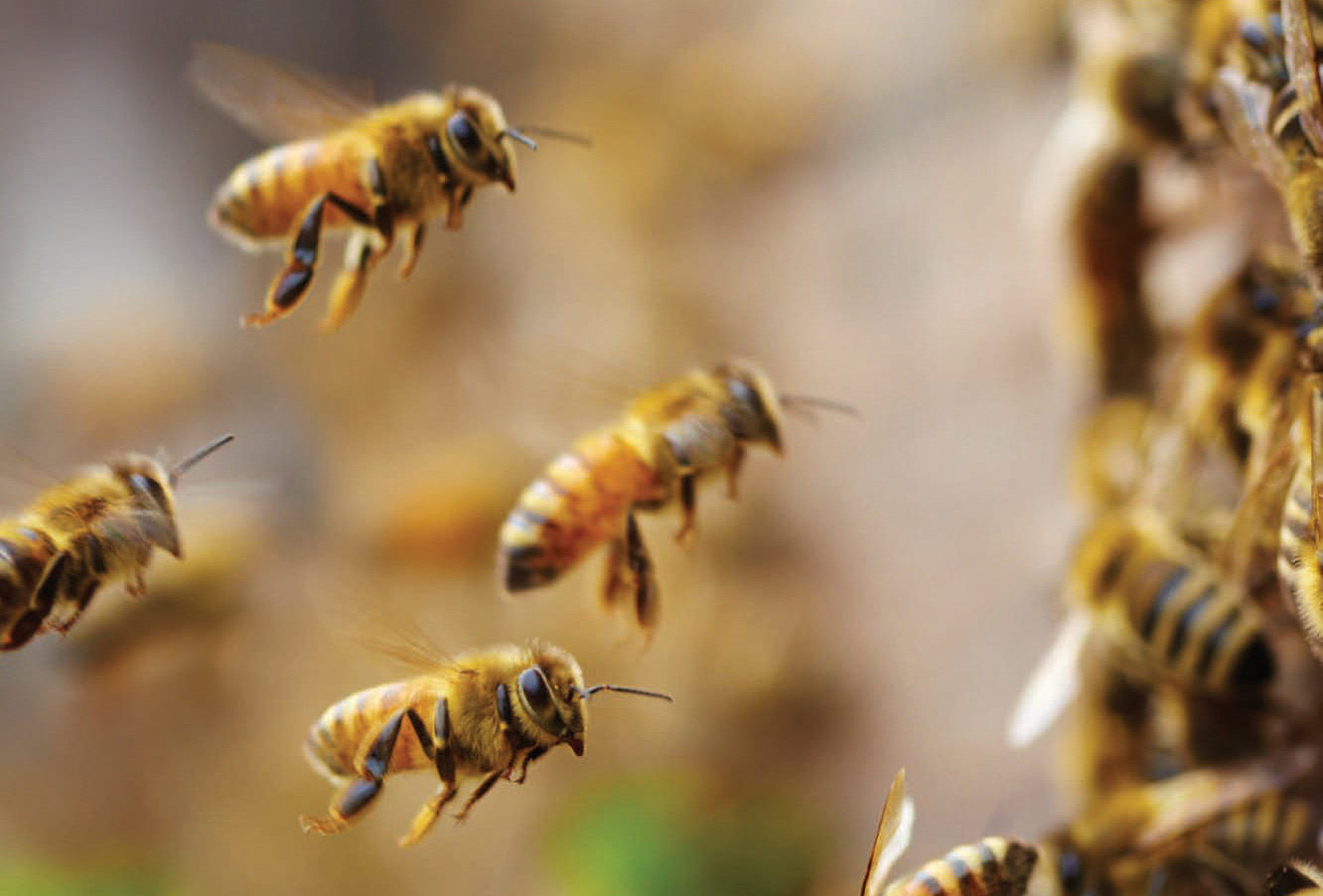
Honeybees have a new champion in the form of a small sensor designed to monitor the health of their hives and transmit the information directly to the beekeeper
THE TREES ARE TURNING, the lake is restless and bees are hard at work in the fields when I meet with Marc-André Roberge, CEO of Nectar Technologies. He’s in Prince Edward County to deliver material to Sylvain Segard and Wilma Vreeswijk of Millefleurs Lavender Farm. They are one of 12 locations, from Quebec to California, beta-testing Nectar’s remote hive management system that has the potential to transform global apiculture – beekeeping.
I asked Marc-André to go slow with me, as I am not very technical and, in his perfect, somewhat quirky English, he told me, “Don’t worry. I am not very technical, either. My partners are the technical ones.” Marc-André’s passion for bees was ignited when he was an industrial design student in Montreal, volunteering at Santropol Roulant Beekeeping Collective. He recalls, “The first time I looked inside a hive, I was overwhelmed. So much life, so much activity.” He learned all about hive management and how much things have changed in 20 years. “Traditional beekeeping was always quite simple,” he says. “You could manage your whole apiary by sampling hives and taking appropriate action based on past experience. You would expect and get uniform results.” Not so today. Beekeepers have to make many more decisions based on conditions in individual hives, because the modern world throws so many more challenges at foraging bees.
“Up to 40 per cent of managed bees die annually, compared to 15 per cent historically,” says Marc- André. “It happens all over the world. Climate change. More monoculture means less biodiversity and more chemicals, there are new diseases and parasites, and land development destroys foraging grounds.” The insect kingdom is in decline, and that will have a devastating impact on global agriculture. Humans have kept honeybees for thousands of years. In the future, we’re going to need them even more to make up for wild pollinators we are losing. Marc-André’s end game is to help restore biodiversity in the world. “We need to disrupt conventional agriculture and recognize that biodiversity is essential to feeding our planet,” he says. Right now he wants to arm beekeepers with twenty-first century technology to help them manage their bees.
In 2016, a Google-sponsored incubator program opened his eyes to how technology could help him protect and nurture his bees. Google believes designers have not just imagination but a global view that, combined with technology, can solve global problems. Its 30 Weeks program brought designers and start-up tech companies together in hopes of igniting ideas and forging connections. Marc-André was inspired. Back in Montreal he pulled together a collection of kids with multiple degrees from McGill University, all who shared two nerdy passions – machine learning and bee keeping. Industrial designer became entrepreneur and Nectar Technologies was born. He might not be very technical, but Marc-André is a hell of a fundraiser. He has raised over a million dollars for the research and development his project needed to take flight.

THE SENSOR IN THE HIVE
Now in its sixth generation, Nectar’s remote hive management system works by placing a small sensor, a BeeCon, in each hive to gather data including temperature, humidity, weight, even the location which will show if a hive is being moved because, yes, hive stealing is a thing. The presence of a queen bee affects many of these conditions, so the BeeCon will detect if she’s there. It’s unobtrusive, the bees pretty much ignore it, other than to daub it with wax, as they will any foreign object. Marc designed the casing and concedes it could be any shape. “But a hexagon speaks to the collective imagination. People see it and think bees.”
Data is gathered at 15-minute intervals and, using local cellular service, is transmitted via Bluetooth to a nearby BeeHub. From there it is sent to an online server, the famous cloud, where artificial intelligence and algorithms kick in to analyze the data and return it to beekeepers, via their cellphones. It’s like getting a text message from the bees. “I wanted to find a way for my bees to tell me what’s going on in the hive, instead of having to visit each one,” says Marc-André. He believed technology could enable a dialogue with bees, and Nectar has done it: given bees a voice. Armed with the information, beekeepers can focus on hives that need them and turn up ready to deal with the issues identified, saving time, money and, hopefully, bees.
“The first time I looked inside a hive, I was overwhelmed. So much life , so much activity.”
Marc-André Roberge
NECTAR IN ONTARIO
I asked Marc-André why Nectar chose Prince Edward County as one of only two Ontario locations. ( The other is Cold Creek Apiary in nearby Brighton.) “Good question,” he laughs. “It’s not in our target market of large scale operations. But the people here were among the first to believe in us, and that made a big difference.” The County-based Upper Canada Equity Fund invested in Nectar early on as part of its mission to fund innovative startups, particularly knowledge-based, that will contribute to rural life and opportunities. “It was not just money,” he says. “They and Prince Edward County Lennox and Addington Community Futures Development Corporation (PELA CFDC) are very supportive and introduced us to beekeepers and many others who are interested in what we are doing.” He cocks his head to one side and smiles. “And Prince Edward County is so beautiful. We like to come here.” They hope to open an apiary lab in the County to continue their research.
WHAT’S NEXT
Earlier this year, Marc-André and two partners drove 10,000 km from Montreal to Seattle to deliver BeeCons and BeeHubs to testers. “We could have shipped them, but we wanted to meet everyone and make it personal. We stayed at people’s homes, met other beekeepers which was very valuable and had a lot of fun.” The testers are vitally important to product development. “They have all been very helpful and patient. We have done many replacements and tweaks to equipment because we must get it absolutely right for the end users, so anything they tell us about their experience is important.”
The hardware is ready and Nectar’s public launch is next year. From Millefleur’s 70 hives dotted around the County to the Alberta operation with 30,000 hives, the testers have proven the system’s value in honeybee management and the potential return on investment. Now Nectar must encourage people to change the way they do things. “It has to be easy to adopt as a management tool, seamless and easy,” he says. There is already international interest from avocado and almond producers and investors, too.
Marc-André, a man who passionately loves bees, rather shocked me when he said, “Honeybees are livestock.” I’d never thought of them that way, but he’s right. We can’t manage wild insects, but we can manage honeybees – feed them, treat diseases, rebuild colonies, replace queens.
The health of honeybees is an indicator of the health of the wider ecosystem, so Nectar’s data gathering system, with its artificial intelligence and algorithms and text messages from bees, could contribute to the future of the insect world. If Nectar’s end game is saving the planet, we support them and wish them luck.
Story by:
Janet Davies
Photography by:
Philippe Jacques




